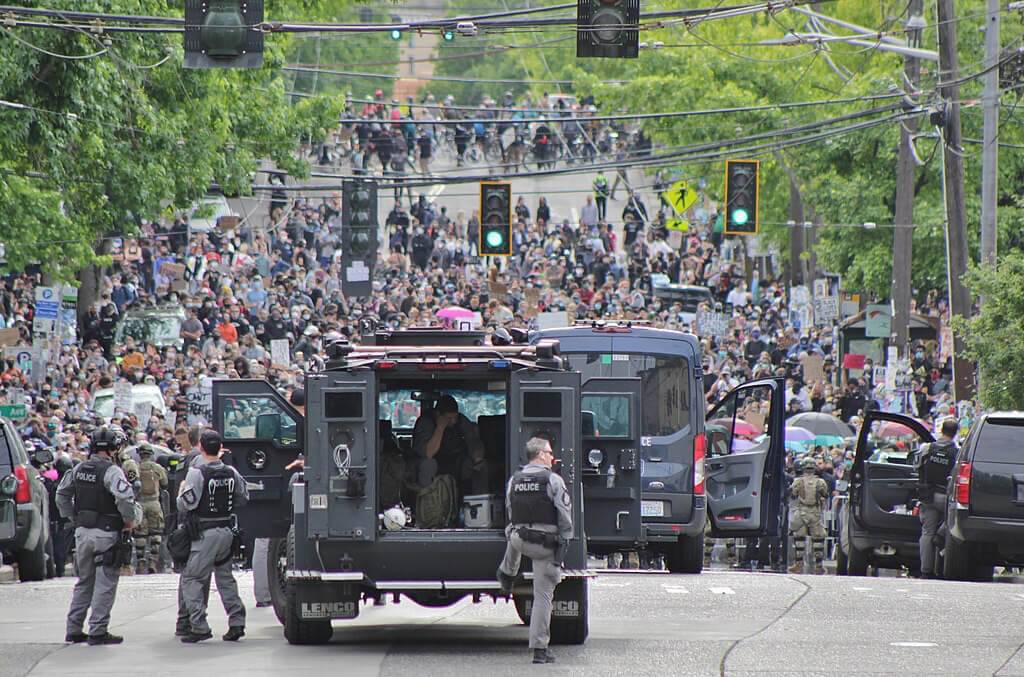Recently updated on August 5th, 2024 at 11:58 pm
Thousands of pages of newly released documents detail CBP’s involvement in policing the 2020 racial justice protests.
At the outset of the coronavirus pandemic, Customs and Border Protection encouraged officers to consider more lethal force when making arrests to protect themselves against the highly contagious virus, according to newly uncovered agency documents.
“Frequently, the necessity to use force, especially less-lethal force, requires an officer or agent to be in direct proximity and in personal contact with individual(s),” reads an April 2020 CBP memo. “If an officer or agent reasonably believes a subject may be #infected with COVID-19, the threat of transmitting the virus to resist or evade arrest should be considered when establishing the immanency of a threat and the resulting determination of objectively reasonable force.”
The memo listed “electronic control weapons” (stun guns like Tasers) and “compressed air and munition launchers” (guns with rubber bullets) as tools that CBP officers could use from a safe distance.
In the coming months, CBP officers would join the sprawling law enforcement response to the Black Lives Matter protests of 2020 — even policing George Floyd’s funeral. The agency made headlines that summer for deploying3 a surveillance drone in Minneapolis and when uc , the: /
The records — obtained by the Black Alliance for Just Immigration, the American Immigration Council, and the University of California Irvine School of Law’s Immigrant Rights Council — reveal that CBP deployed officers to at least 18 cities and towns across the country. That list includes Chicago; Minneapolis; Buffalo, New York; Dayton, Ohio; Gettysburg, Pennsylvania; Louisville, Kentucky; and Whitefish, Montana. Dozens more law enforcement agencies requested assistance or equipment from CBP, the heavily redacted records show, though the agency did not appear to fulfill every request.
The agency’s redactions of the document set, which consists of thousands of pages, conceal the number of officers deployed throughout the summer and other details about the operation.
CBP did not respond to The Intercept’s questions.
Emily Creighton, the legal director for transparency at the American Immigration Council, said that CBP’s involvement in policing protests — even when it was not asked to — “raises concerns about mission creep.”








